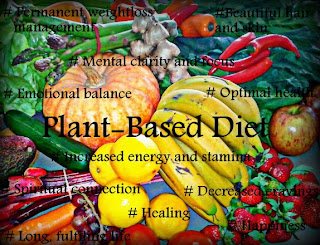It is believed that over 75% may develop Fibroids in their lifetime. Many women may have them without any symptoms, while others can suffers symptoms that can increasingly impact their quality of life.
So what are fibroids?
Fibroids are small, noncancerous growths, or tumours, that grow on the walls of the uterus. They can potentially cause severe pain, excessive bleeding, and can even lead to infertility. The cause of fibroids is not fully known or understood, however, they have been linked to Oestrogen. Doctors can prescribe drugs that suppress oestrogen in order to treat fibroid. There are other hormone releasing drugs that are said to possibly shrink fibroids by around 30 to 90 percent by forcing the ovaries to stop making oestrogen. The only medically guaranteed way to completely get rid of fibroids is to have a surgical procedure called a hysterectomy, where the uterus is completely removed from the body. While all this, hormonal drugs and surgical procedures have risks and negative effects of there own. It is possible to reduce the symptoms and even potentially remove the growth of fibroids by naturally cleansing and balancing the body, as well as regulating hormonal production.
What foods can you eat to help treat fibroids and lessen the symptoms they cause?
1) Fibre - The most efficient tool you can give your body to combat fibroids is to eat a high-fibre diet of plant-based foods. Apples, Nuts and Seeds are all great natural sources of fibre. Grounding nuts and seeds will help with the digestion of them as well as making their goodness more easily absorbed. Eating a plant-based diet that is high in fibre will significantly reduce the circulating levels of oestrogen.
2) Phytoestrogens - The plant based diet is also important because plant foods contain a substance called phytoestrogens, or plant oestrogens. These substances bind themselves to the same cell receptors as oestrogen. The blocks oestrogen's ability to affect your cells. Too much oestrogen can cause the uterus to grow in size, increasing the chances of fibroid growth. As the excess oestrogen is blocked with the help of the phytoestrogens in plant-based foods, the uterus can begin to shrink, as well as working to shrink the fibroids.
What should you foods to avoid?
Both sugar and caffeine interfere with the body's natural hormone production system and wire the brain in a certain way that routine hormonal regulations and productions are interrupted. Try to remove or extremely limit your intake of any products containing sugar and caffeine if you wish to successfully treat fibroid growth. Saturated fats have a similar effect and should also be completely avoided.
Dairy products and meat products will increase the development and symptoms of fibroids for two reasons -
1) Animals contain hormones of their own, and much of this is stored in their muscles, fats, blood and milk production. By eating this, you are also eating their hormones. Hormonal imbalance is a leading cause of many illnesses and diseases in humans, and consuming substances that interfere with our natural hormonal health with inevitably impact our health in many ways. Dairy products and non-organic meats are even more damaging as they most often are contaminated with hormonal drugs and pesticides as well as their own hormones.
2) All animal products naturally create mucus in the human body, weakening the immune system, affecting the quality and purity of the blood and therefore cell tissue, and also increasing the chances of abnormal growths in the body. For these reasons animal dairy and meat products should be completely avoid or limited as much as possible.
Here are some of the highest fibre foods:
Apples
Avocado
Bananas
Berries - Blueberries, Blackberries, Raspberries, etc.
Dried Fruits - Figs, Raisins, Apricots, Dates, etc.
Linseed/Flax seeds
Chia Seeds
Nuts
Guava
Kiwi
Orange
Pears
Prunes
Broccoli
Brussels sprouts
Cabbage
Carrot
Beetroot
Chick Peas
Eggplant
Greens - collards, kale, turnip greens
Legumes - Lentils, Kidney beans
Mushrooms
Pumpkin
Peas - black-eyed peas, green peas
Peppers
Rhubarb
Spinach
Sweet Potatoes
All of these foods are not only high in fibre, but each have many health benefits and healing properties of their own. With the inclusion of a wide variety of plant foods and the exclusion of processed, sugary, or caffeinated foods, along with the exclusion of limitation of animal products, the quality of life and health significantly improves.
Remember to drink plenty of water, at least 8 cups a day. Fibre absorbs water in the body, so when increasing fibre in your diet, increase your water intake also. If you do not drink enough water you can become dehydrated and suffer from constipation.
Other great foods that aid in healing:
Turmeric Root
Ginger Root
Cilantro and Coriander seeds
Fresh wheat grass (not sprouted)
Oregano
Rosemary
Garlic
Onions
Coconut and Coconut oil
Peaches
Cucumber
Celery
These foods all have a variety of benefits and work wonders in the human body!
Here's two recipes perfect for the treatment of Fibroids:
Breakfast Smoothie
3 bananas chopped
4 dates, pitted and chopped
3-5 sliced of natural tin Peaches
2 tablespoons of milled linseed
1 tablespoon of ground chia seeds
2 fresh Kale leaves
1 tablespoon of natural bush honey (or natural organic honey)
1 teaspoon of ground Cinnamon (not cinnamon sugar)
Pure, organic Rice Milk
Blend in blender and add rice milk until you desired texture is achieved.
Afternoon Juice:
2 Beetroots
4 Carrots
2-4 Kale leaves
2 Green Apples
1 full stick of Celery
1 lemon
1 portion of Turmeric Root
1 portion of Ginger Root
Juice through a juicer.
It is best to drink this juice mixture while still fresh and all the healing enzymes are still alive and active - within 15-20 minutes.
Xx Samara.
Additional sources:
Book: "Fibroids: The Complete Guide to Taking Charge of Your Physical, Emotional and Sexual Well-Being" by Johanna Skilling and Eileen Hoffman; 2006
Book: "What Your Doctors May Not Tell You About Premenopause;" John R. Lee, Jesse Hanley and Virginia Hopkins; Hachette Digital, Inc; 1999
website: www.naturalnews.com




